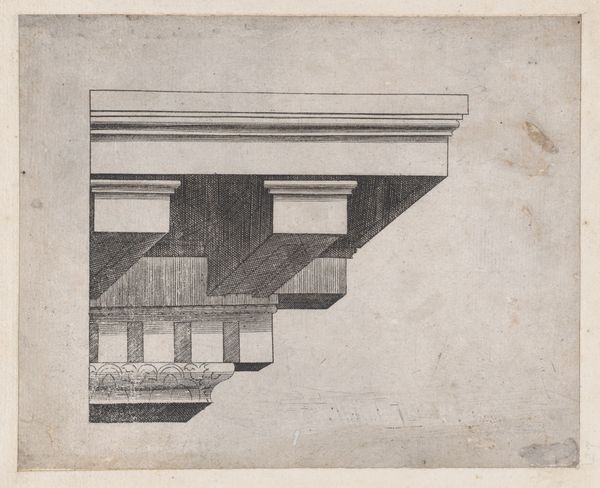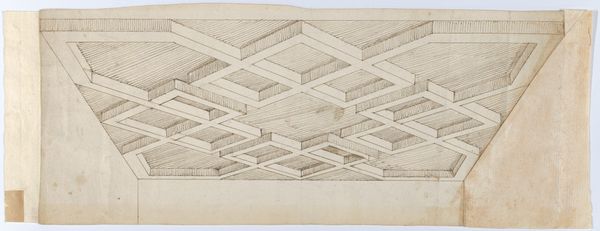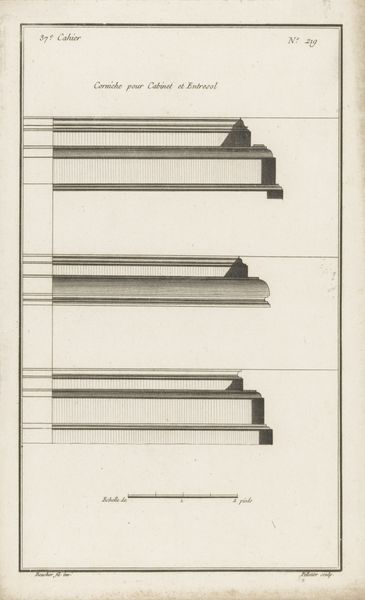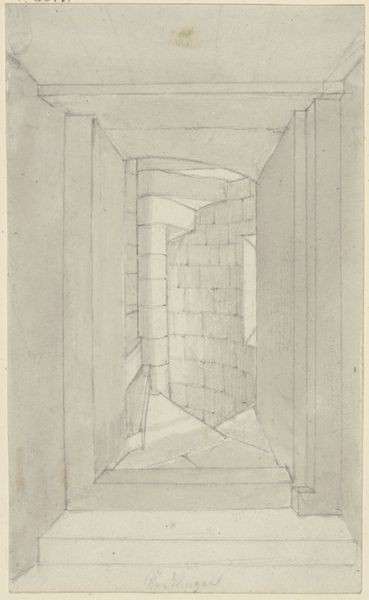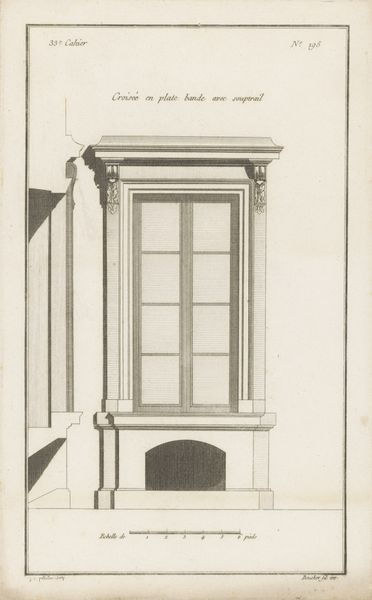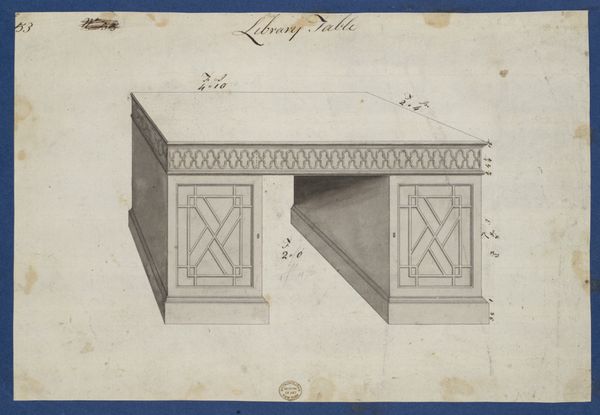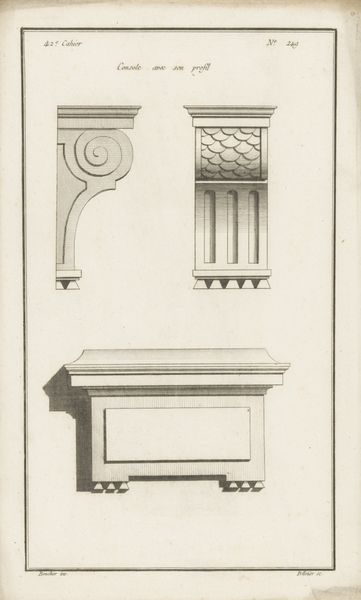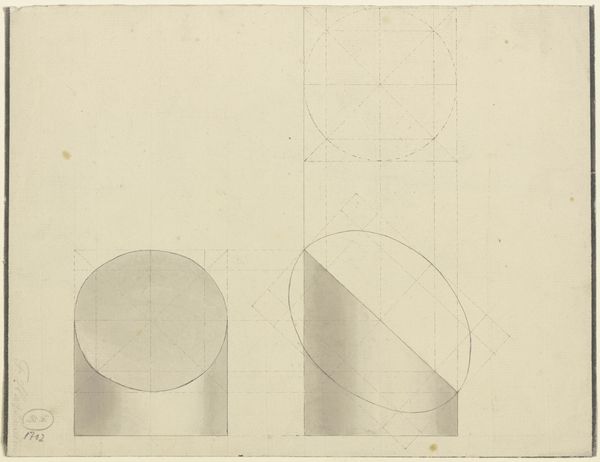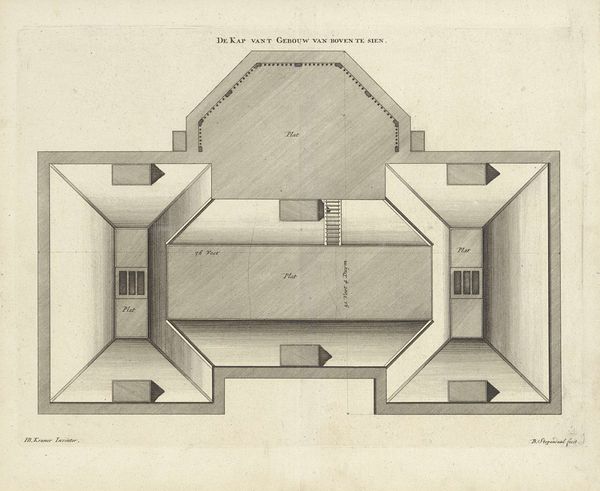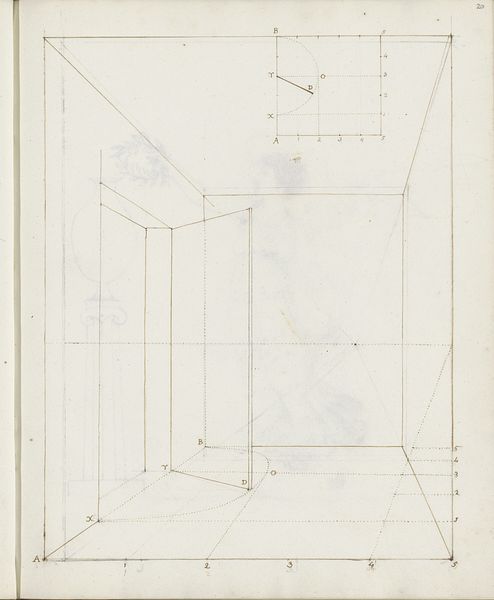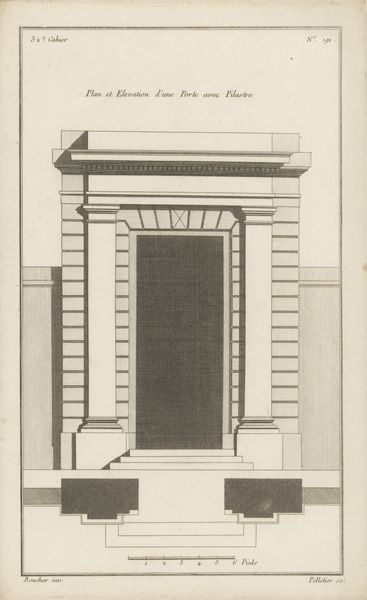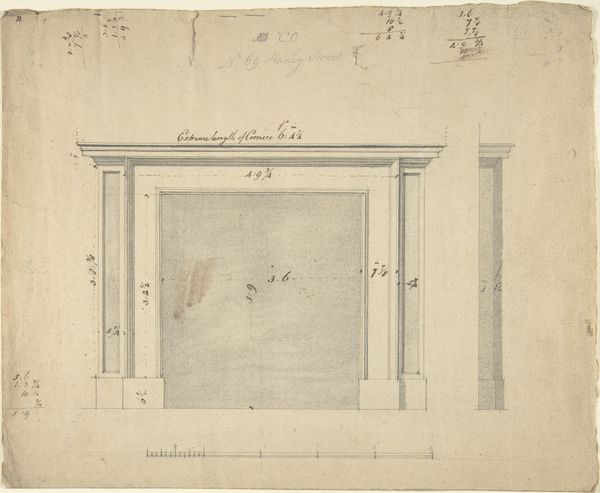
drawing, print, etching, architecture
#
drawing
# print
#
etching
#
form
#
11_renaissance
#
academic-art
#
architecture
Dimensions: Sheet: 5 11/16 x 6 7/16 in. (14.4 x 16.3 cm) Mount: 6 13/16 x 7 15/16 in. (17.3 x 20.1 cm)
Copyright: Public Domain
Monogrammist G.A. & the Caltrop created this Doric entablature print sometime in the 16th century. During this period, architectural prints gained popularity as pattern books. They facilitated the spread of classical designs from Italy throughout Europe, influencing architecture and design. Prints like these reflect the cultural values of the Renaissance. They reveal a reverence for classical antiquity, and a desire to revive its forms and principles. These designs were not merely aesthetic choices, but also statements about power, knowledge, and cultural identity. The Doric order, with its associations with strength and simplicity, was often favored for public buildings. Consider how the printmaker, likely working within a workshop, would have understood their role in disseminating these classical ideals. The emotional impact of this print lies in its ability to connect us to the past, inviting us to imagine the spaces and structures it helped to shape. How does this image reflect society’s engagement with historical precedent?
Comments
No comments
Be the first to comment and join the conversation on the ultimate creative platform.
